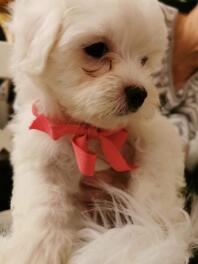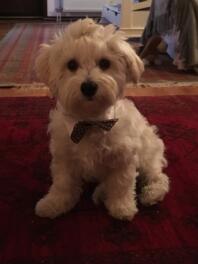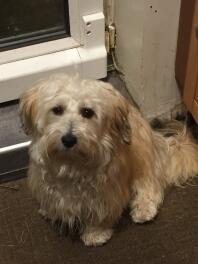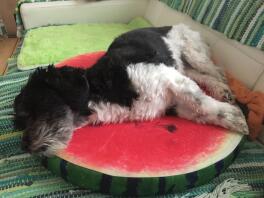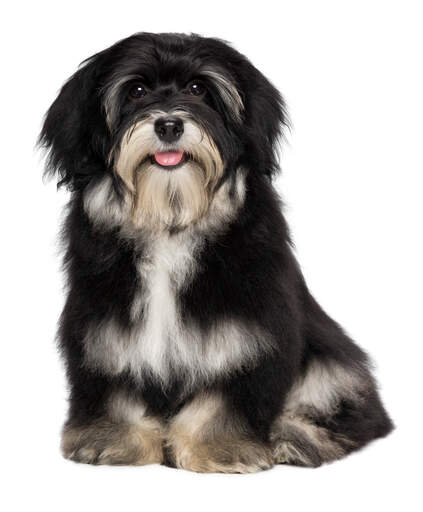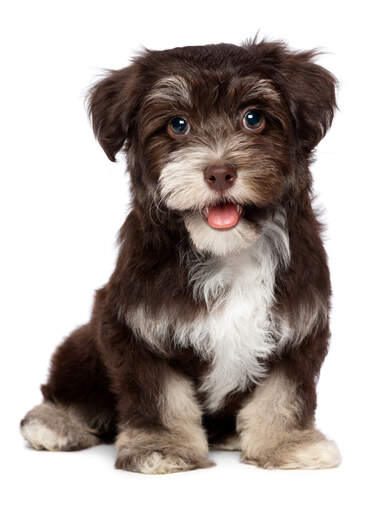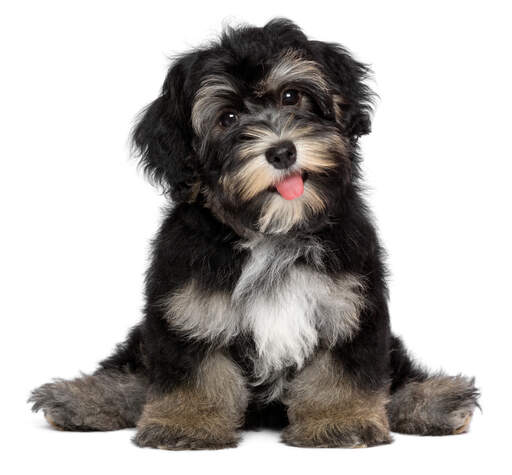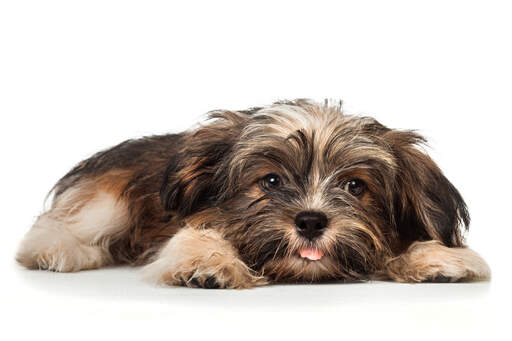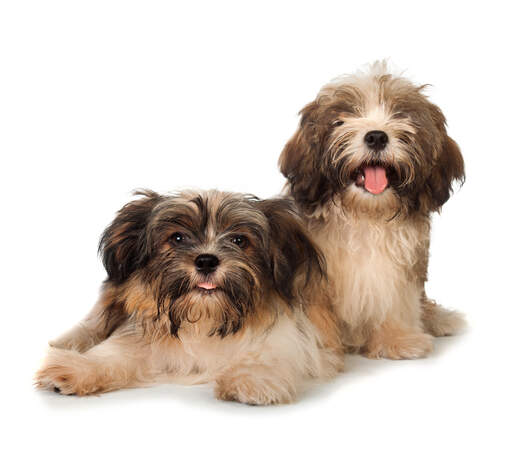Bichon havanais (Havaneser) hund





History
The Havanese belongs to the Bichon Family and originated in the mediterranean centuries ago, Spanish traders took the dogs to Cuba as gifts to establish trading deals and the breed soon became popular with the wealthy. They were nick named the Habeneros or White Cuban. They made their way back to Europe and were often used as performing dogs in Circuses. The breed almost died out, but in the 1960's several dogs were taken to the US and most of the modern day animals descend from these dogs.
Behaviour
The Havanese is a busy and curious dog that will always want to know what is going on and be the centre of attention. They really crave attention and detest being ignored. If you don't have time to be with your Havanese for long periods, this isn't the dog for you. They can be left alone for short periods if trained from an early age. They are great family dogs, getting on with cats, dogs and people, plus strangers. It is attention they crave and they don't mind who they get it from. They will be devoted to those closest to them and are amusing and playful. They are affectionate and often referred to as 'velcro dogs' as they will be with you constantly. They love nothing more than cuddling up close to you on the sofa. The Havanese is an intelligent dog that loves to please. They are highly trainable and enjoy the challenge of learning new tricks. They are born performers and pick things up quickly. They respond best to firm, consistent training and have a habit of twisting you around their paws with their antics. Many Havanese have their owners well trained and over indulging should be avoided to prevent problems later on. They respond well to recall, excel at agility competitions and do well as therapy dogs. They can sometimes have a tendency to bark to get attention, but with proper training, they will learn when enough is enough and you want some quiet time. They like to sit up high so they can see what is going on in the world and you will often find them on the back of the sofa or on the window sill. Havanese are very active and need as much exercise as they are a much larger breed. A game of fetch in the garden will not tire them out, they need a couple of decent walks a day to keep them physically active and prevent weight gain. The habit of hand feeding is all too common with this breed, who can become fussy eaters and often owners feed them human food when they become picky. A well balanced dog food, fed from a bowl should be offered, don't get caught up in the mind games that a Havanese can play.
Their long coat is non shedding and loose hairs tend to cling to surrounding hair, so brushing is important 4 times a week to prevent tangling. They have few health concerns and are generally a hardy breed, although Patellar Luxation is sometimes seen in the breed.
Temperament
The Havanese has a plucky, happy go lucky temperament. For a small dog this breed will enjoy rough and tumble games as much as his much larger cousins. That said they really are big softies and will become utterly devoted to their owners wanting to snuggle down at every given opportunity.
They get on well with other pets and children but early socialisation is important in order to reduce timidity in later life.
Health Problems
Health problems that can affect Havanese include patellar luxation (dislocation of the kneecap), eye problems, deafness and Legg-Calve-Perthes disease (degeneration of the femoral head leading to lameness).
Breed Details
- Status: Common
- Life Expectancy: 14 - 16 years
- Vægt: 4.5 - 7.3 kg
- Højde: 8 - 11"
- Rare: Nej
- Coat: Long - Hypoallergenic
- Grooming Requirements: Everyday
- Town or Country: Either
- Minimum Home Size: Flat
- Minimum Garden Size: No Garden
- Breed Type: Toy Dog
- Størrelse: Lille
- Energy Level: Høj
- Exercise Required: Up to 1 hour
Billeder af Havanese
